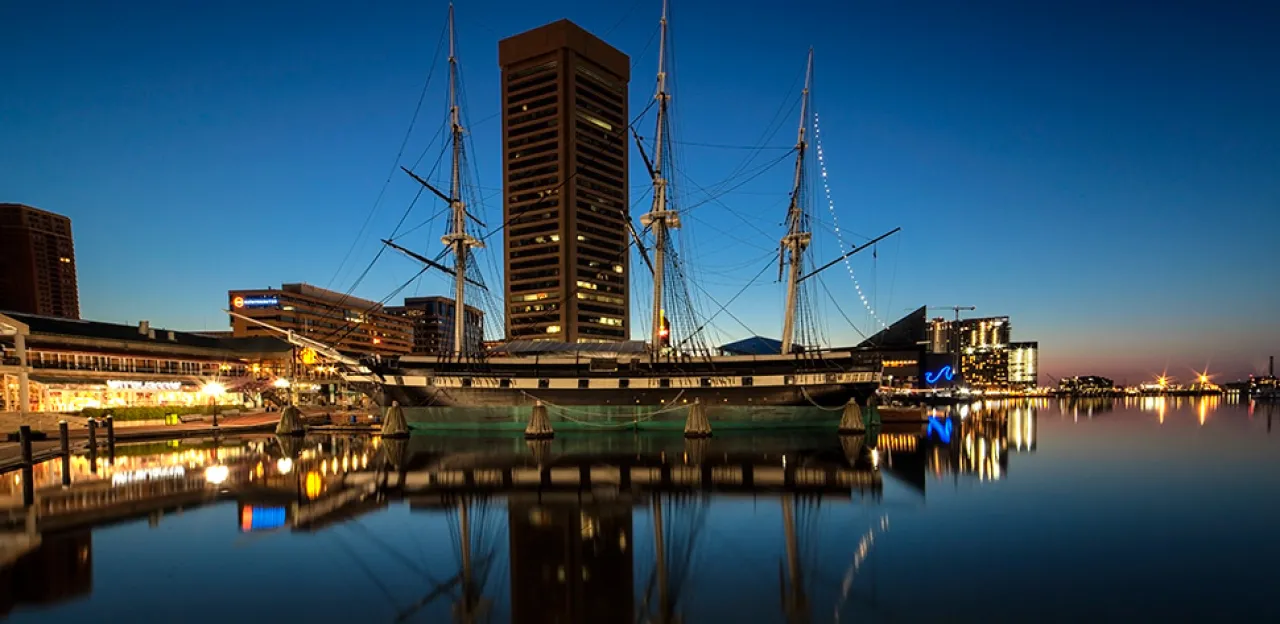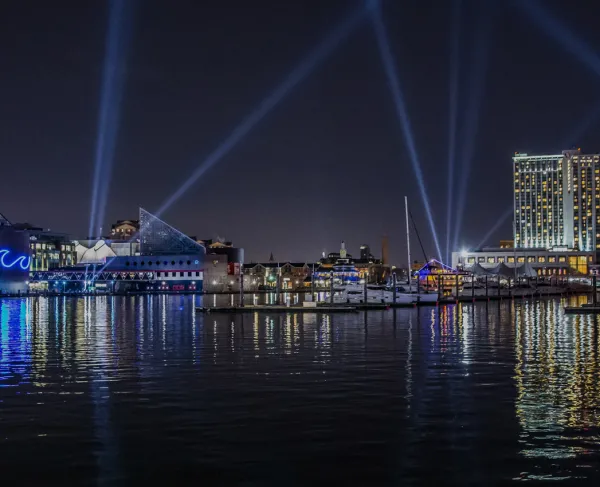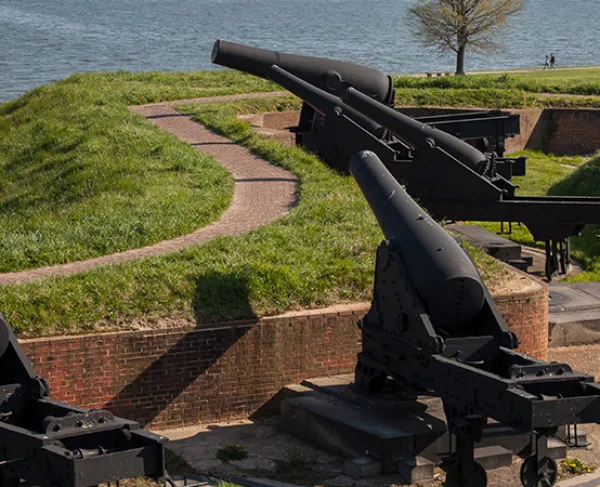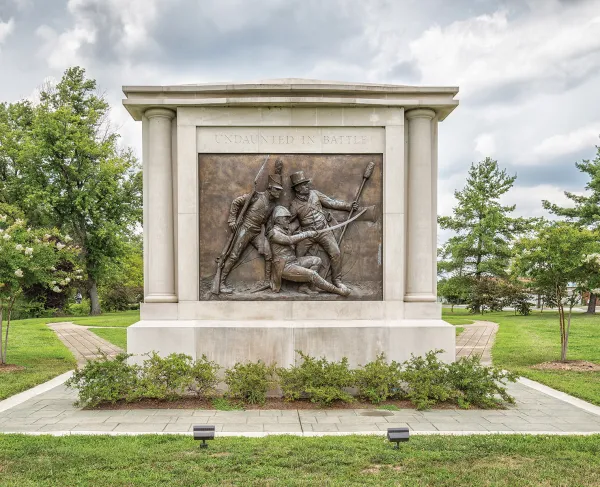Tour War of 1812 Baltimore in One Day

The city of Baltimore served as the sight for perhaps the most culturally significant battle in American History. Not only did it turn the British back from their invasion up the Chesapeake Bay, but it also saw prominent local Francis Scott Key create the poem that would eventually become our national anthem, “The Star-Spangled Banner.”
After British forces sacked and set fire to Washington, and defeated the Americans at nearby Bladensburg, they hoped to continue their success by capturing the city of Baltimore, then one of the largest port cities in North America. As General Robert Ross' forces attempted to enter the city by land, a Royal Navy fleet under Vice Admiral Alexander Cochrane attempted to bombard the prominent Fort McHenry into submission throughout September 13, 1814. The bombardment failed, symbolized by the raising of an enormous American flag the following morning, and with the death of General Ross and the stalling of his army at North Point, the British were forced to abandon the campaign and the greatest threat to independence America had faced in over thirty years had been averted. If you have a day free, spend it tracing the historic artifacts and sites surrounding this legendary battle.
Before you go:
- Print or download this Tour Map.
Stop #1: Maryland Historical Society
Details: http://www.mdhs.org/
Time: 1-2 Hours
The Maryland Historical Society is a large repository of artifacts from all periods of Maryland History, from pre-Colombian times to the modern day.
What to do:
- Visit the museum collection, which features weapons, artifacts, and artwork relating to the people who lived through the Battle of Baltimore during the War of 1812.
- See the special exhibition on Elizabeth Patterson, the Baltimore heiress who caused an international scandal in the years preceding the war by eloping with Jerome Bonaparte, Napoleon’s younger brother.
Stop #2: Battle Monument Square
Details: https://www.mdhistory.org/resources/battle-monument-square/
Time: Less than an Hour
Located only a few blocks away from City Hall, the Battle Monument commemorates all those who gave their lives in defense of Baltimore. The 52-foot statue was built between 1815 and 1825 and includes the names of all the officers who perished in the battle on top of the fasces sculpture. It is one of the oldest remaining structures in the downtown area.
Don't Miss:
- The monument is in the center of the Historic Government and Business District. Since City Hall is only two blocks away, now's your chance to see it.
Stop #3: Star-Spangled Banner Flag House
Details: http://www.flaghouse.org/
Time: 1-2 Hours
This historic building is the house where Mary Pickersgill lived and where she made the flag that flew over Baltimore during the British bombardment, the now famous "Star Spangled Banner." Mary and her family had lived and ran their flag-making business in the house since 1806, and the building has retained much of its original form since it was sold to the city in the 1920's. Those who visit can catch an exquisite glimpse into Baltimore life during the 19th century.
What to do:
- Visit the first-floor exhibit gallery, "Preserved Us a Nation" which details the sacrifices made by the common citizens of Baltimore during the Battle of Fort McHenry.
- See the second-floor gallery that focuses on the life of Mary Pickersgill and the flag that she created. It includes several interactive exhibits to give guests of all ages a sense of the flag's enormous size and scale.
Insider Tips:
- Feeling hungry? The Flag House sits right next to Baltimore's famous Little Italy, where you can find plenty of casual, but quality restaurants like Joe Benny's and Amiccis.
- Mary Pickersgill's flag is now housed in the National Museum of American History, in Washington D.C.
Stop #4: Memorial to Armistead, Federal Hill Park
Details: https://baltimoreheritage.org/monuments-to-george-armistead-and-samuel-smith-rededicated-and-celebrated-for-defenders-day-weekend/
Time: Less than an Hour
Overlooking the city's inner harbor, the park at Federal Hill currently hosts a statue for the commander of Fort McHenry during the Battle for Baltimore: Major George Armistead, who led the defense of Fort McHenry and commissioned Mary Pickersgill's enormous flag.
What to do:
- There is nothing particularly historic about this park otherwise, but it does provide one of the best looks at the city's skyline. Sit back and take in the view!
Insider Tips:
- Major George Armistead was the uncle of future Confederate General Lewis A. Armistead. Lewis was mortally wounded during Pickett's Charge at Gettysburg.
Stop #5: Fort McHenry
Details: https://www.nps.gov/fomc/index.htm
Time: 2-3 Hours
The final stop of this tour is where the center of the Battle of Baltimore took place, and where the British were forced to turn back. Now run by the National Park Service, Fort McHenry is one of the most visited historic parks in the country and is remembered as the site which saved the country from disaster and where our national anthem was born.
What to do:
- Participate in Flag Talk events held at regular hours daily. Visitors can learn more about the flag and the poem and anthem it inspired, as well as help unfurl and raise an exact replica to fly over the fort.
- Go to the visitor center, which features several interactive exhibits and a short movie.
- Wander through the fort itself, which includes a newly restored barracks, as well as officers' quarters, powder magazine, and guard house.
- Walk the Star-Spangled Banner Historic Trail surrounding the fort, which is also the center of a state-wide project to rebuild natural habitats along the Chesapeake Bay.
If you have time:
- Visit the USS Constellation Museum Ship, a rebuilt copy of a War of 1812-era frigate and one of the last sailing ships ever commissioned for the United States Navy. Located right in Baltimore's Inner Harbor. Launched in 1855, she was originally used for hunting down illegal slave ships, before spending much of the Civil War hunting for Confederate commerce raiders.
- The Reginald F. Lewis African American Museum right next door to the Pickersgill House covers four hundred years of African American history in Maryland.
- The Baltimore Civil War Museum. As some of the first casualties in the war took place in Baltimore, much of the emphasis on this museum is placed on the Riots of 1861, though the museum also showcases depictions and artifacts from other points in the war and the issues surrounding it.
Related Battles
200
250






